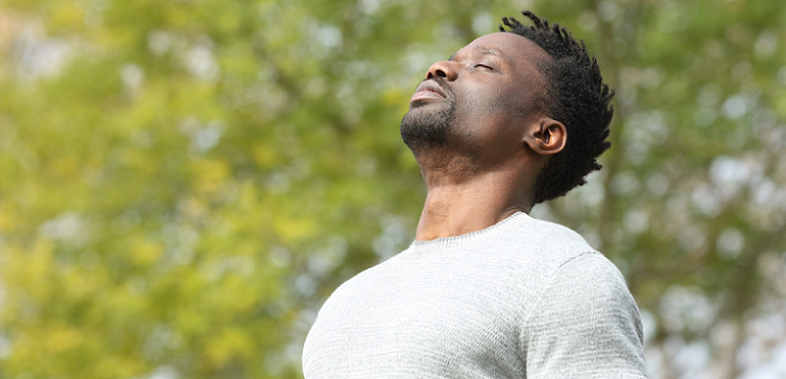
Breathing is an essential bodily function that we often take for granted. However, the way we breathe can have a profound impact on our physical and mental health. Deep breathing exercises, also known as breathing techniques, have been shown to reduce stress and anxiety, improve cardiovascular health, boost the immune system, enhance mental clarity and focus, and promote relaxation and better sleep.
Overview of the Importance of Deep Breathing
Deep breathing exercises are essential for reducing stress and anxiety, improving cardiovascular health, boosting the immune system, enhancing mental clarity and focus, and promoting relaxation and better sleep.
Mindful breathing can activate the body’s relaxation response, improve blood circulation, increase the oxygen flow to the brain, and induce a state of relaxation. Incorporating deep breathing exercises into your daily routine can help manage stress, improve physical health, and promote overall well-being.

The Science Behind Breathing
Breathing is a complex process that involves the exchange of gases between the body and the environment. The respiratory system, which includes the lungs, airways, and respiratory muscles, plays a crucial role in the process of breathing.
Oxygen and Carbon Dioxide Exchange
When we breathe in, oxygen-rich air enters the lungs, and oxygen diffuses into the bloodstream. At the same time, carbon dioxide, which is a waste product of cellular metabolism, is expelled from the body through exhalation.
Role of Diaphragm
The diaphragm, which is a large, dome-shaped muscle located at the base of the lungs, plays a crucial role in breathing. When we inhale, the diaphragm contracts and moves downward, allowing the lungs to expand and draw in air. When we exhale, the diaphragm relaxes and moves upward, pushing air out of the lungs.
The Autonomic Nervous System
The autonomic nervous system, which regulates involuntary bodily functions such as heart rate, digestion, and breathing, has two branches: the sympathetic and parasympathetic nervous systems. The sympathetic nervous system is responsible for the “fight or flight” response, which increases heart rate, constricts blood vessels, and stimulates rapid, shallow breathing.
The parasympathetic nervous system, on the other hand, is responsible for the “rest and digest” response, which slows down heart rate, dilates blood vessels, and promotes deep, slow breathing.
The Relaxation Response
Deep breathing exercises can activate the parasympathetic nervous system and trigger the relaxation response, which helps to counteract the effects of the sympathetic nervous system. This can lead to a decrease in stress hormones such as cortisol and adrenaline, a reduction in muscle tension, and an overall sense of calm and relaxation.

Types of Deep Breathing Exercises
There are several types of deep breathing exercises that can help activate the relaxation response and promote physical and mental well-being. Each of these techniques can be practiced alone or in combination with others, depending on individual needs and preferences.
- Diaphragmatic breathing: This technique involves deep breathing using the diaphragm to expand the lungs fully. It can help reduce stress and anxiety and improve overall breathing efficiency.
- Box breathing: This technique involves inhaling for a count of four, holding the breath for a count of four, exhaling for a count of four, and holding the breath for a count of four. It can help regulate the autonomic nervous system and induce a state of calm.
- Alternate nostril breathing: This technique involves inhaling through one nostril while holding the other closed, then switching to exhale through the other nostril while holding the first one closed. It can help balance the left and right hemispheres of the brain and promote overall relaxation.
- Kapalbhati breathing: This technique involves rapid, forceful exhales through the nose while keeping the inhale passive. It can help improve lung capacity and promote relaxation.

Benefits of Deep Breathing Exercises
Deep breathing exercises are a form of mindful breathing that involves taking slow, deep breaths in and out through the nose or mouth. These exercises have numerous benefits for both physical and mental health, making them an essential tool for managing stress and improving overall well-being.
One of the most significant benefits of deep breathing exercises is that they can help reduce feelings of stress and anxiety. By activating the parasympathetic nervous system, deep breathing can trigger the relaxation response, which can help to lower cortisol levels, decrease tension, and promote feelings of calmness and relaxation.
Deep breathing exercises can also have a positive impact on cardiovascular health. By improving blood circulation, lowering blood pressure, and reducing the workload on the heart, deep breathing can lower the risk of developing cardiovascular diseases such as hypertension, stroke, and heart attack.
Deep breathing exercises can also boost the immune system by increasing lymphatic flow and improving the body’s ability to fight off infections and diseases.
Deep breathing exercises can also improve mental clarity and focus by increasing the oxygen flow to the brain. This can help to improve cognitive function, mental clarity, and concentration, making deep breathing a useful tool for improving work and study performance.
Deep breathing exercises can promote relaxation and better sleep by inducing a state of relaxation. This can help to reduce insomnia and improve overall sleep quality, leading to a more restful and rejuvenating sleep experience.
How to Practice Deep Breathing Exercises
Deep breathing exercises are easy to learn and can be practiced anywhere, anytime. Here are some steps to help you practice deep breathing:
- Find a quiet and comfortable place to sit or lie down.
- Close your eyes and take a few deep breaths in and out through your nose or mouth.
- Focus on your breath and try to make your inhales and exhales slow and steady.
- Start with diaphragmatic breathing by placing one hand on your chest and the other on your stomach. Breathe in deeply, allowing your stomach to expand as you inhale. Then, exhale slowly and feel your stomach move back inward.
- Once you are comfortable with diaphragmatic breathing, try other techniques such as box breathing, alternate nostril breathing, or Kapalbhati breathing.
- Practice for 5-10 minutes per day, gradually increasing the duration as you become more comfortable with the techniques.
- Incorporate deep breathing exercises into your daily routine by practicing them during breaks at work, before bedtime, or in the morning to start your day off on a positive note.
Remember to be patient and gentle with yourself as you learn to practice deep breathing exercises. It can take time to master the techniques, but with regular practice, you will soon be able to reap the many benefits of mindful breathing.
